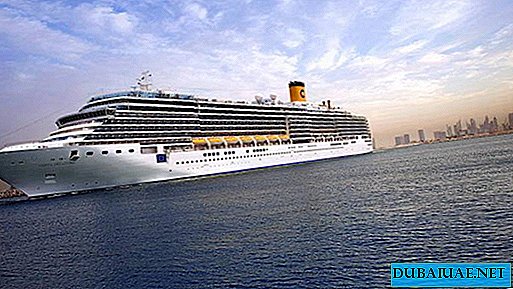 Text: Nikolai Gudalov
Text: Nikolai Gudalov The CALENDAR sets the rhythm of our life, and more often than not, we don’t even think about its origin. BUT WHEN IS THE NEW YEAR FOR A Muslim? Despite the widespread use of the Gregorian calendar in Muslim countries, Muslim holiday dates keep you more important. NEW YEAR - LET AND NOT THE MOST BRIGHT OF THEM, BUT IT HAS AN INTERESTING HISTORY AND DEEP MEANING.
In Arabic, the New Year is “Ras Assana,” that is, literally, “the head of the year” (by the way, in related Hebrew, the New Year holiday is similarly designated as “Rosh Hashana”).
What is a Muslim year? The calendar in Islam is the lunar. A year lasts 354 days 8 hours 48 minutes 34 seconds. It is divided into 12 months, each of approximately 29 days 12 hours 44 minutes 3 seconds, and, in accordance with tradition, the odd months include 30, and the even months include 29 days. The first month of the year begins with a new moon. By the last month, due to the accumulated "extra minutes", an extra day is added approximately every three years, which makes the year a leap year. The Islamic year is shorter than according to the Gregorian solar calendar, so that its dates with each year correspond to ever earlier dates of the Christian calendar. So, in 2008 (AD), most Muslims of the world celebrated races asana very close to the festive date of the Gregorian calendar - December 29. In 2015, the date when the inhabitants of the United Arab Emirates celebrated the new, 1437th year, was October 15th.
The approximation here is due to the fact that the onset of the new year will be determined in the UAE on the basis of real observations of the moon. Now in Muslim countries, methods are used to determine dates, which are based on modern astronomical calculations; on the other hand, dates can be fixed in special tables, and not calculated by observation. Different approaches lead to the fact that the onset of Muslim holidays in different countries can vary by day or even more.
Widespread in Saudi Arabia and beyond was the so-called Umm al-Qur calendar. Over the course of history, it was reformed three times, and since 2002 the 29th day of the month is considered the eve of a new month if, in astronomical terms, a geocentric connection occurs before sunset, and the moon sets after the sun. A new month begins only after a young month appears above the horizon in Mecca. In the vast majority of cases, it will not be visible to the naked eye.
In the Emirates, the achievements of modern science are also widely used to determine dates. So, in Abu Dhabi, there is a whole International Astronomical Center, one of the main areas of work of which is the “Islamic Crescent Observation Project”.
 Some elements of the Islamic calendar, apparently, are rooted in the life of the pre-Islamic Mecca. The then lunar calendar also had 12 months and 354 days (worshipers sought to comply with the solar calendar, adding to it some time intervals, up to months). The third and fourth months of the year bore the same names as in the modern Islamic calendar - “rabi al-avval” and “rabi al-sani” (“rabbi the first” and “rabbi the second”, the word “rabbi” means “spring” "). The sacred status of the first, seventh, eleventh and twelfth months of the year (muharram, rajab, zu-l-kada and zu-l-hijjah) dates back to the same times. It is worth noting that the lunar calendar, apparently, was largely used by the Meccans and was adopted by Islam, since the population of the city consisted mainly of merchants, for whom agriculture was not of primary importance. Such a calendar, unlike the solar one, was not associated with the change of seasons and would have little benefit for farmers. Of course, the hijra became the chronological and semantic reference point for the Islamic chronology - the relocation of the Prophet Muhammad and his followers from Mecca to the city of Yasrib (Medina).
Some elements of the Islamic calendar, apparently, are rooted in the life of the pre-Islamic Mecca. The then lunar calendar also had 12 months and 354 days (worshipers sought to comply with the solar calendar, adding to it some time intervals, up to months). The third and fourth months of the year bore the same names as in the modern Islamic calendar - “rabi al-avval” and “rabi al-sani” (“rabbi the first” and “rabbi the second”, the word “rabbi” means “spring” "). The sacred status of the first, seventh, eleventh and twelfth months of the year (muharram, rajab, zu-l-kada and zu-l-hijjah) dates back to the same times. It is worth noting that the lunar calendar, apparently, was largely used by the Meccans and was adopted by Islam, since the population of the city consisted mainly of merchants, for whom agriculture was not of primary importance. Such a calendar, unlike the solar one, was not associated with the change of seasons and would have little benefit for farmers. Of course, the hijra became the chronological and semantic reference point for the Islamic chronology - the relocation of the Prophet Muhammad and his followers from Mecca to the city of Yasrib (Medina).
Most likely, Muhammad, together with his associate Abu Bakr, reached Yasrib on September 24, 622 A.D. e. This year was the first in the Muslim calendar. The calendar itself was introduced after the death of the Prophet by the second righteous caliph - Omar, who ruled the Muslim state in 634-644. The date of the beginning of the year was the first day of Muharram of the first year of the Hijra, i.e., July 16, 622. The Hijra as the beginning of the reckoning was then chosen from several options, including the year of the Prophet's birth, and various events of his biography, and the date of his death . Such a choice - made only a few years after the departure of Muhammad - turned out to be historically correct.
The significance of the hijra was truly fateful for Islamic civilization. From the very beginning, the sermon of the Prophet Muhammad was met with mockery in his native Mecca, and first of all from his fellow tribesmen - Quraysh, pagans. The first two groups of Muslims are still around 615-616. were forced to move - to perform the first hijra - from Mecca to Ethiopia, under the protection of its Christian ruler. The life of Muhammad and his remaining followers was in ever greater danger. However, the inhabitants of Yasrib invited him to their place as a judge and ruler. Muhammad accepted the offer, and the Muslims began secretly and gradually moving to Yasrib. Muhammad and Abu Bakr moved there among the last, miraculously escaping from the chase of Quraysh. This relocation of Muslims over 400 kilometers to the north was not just a physical displacement.
Yasrib received the name Medina (Arabic. "City", sometimes add - "Madinat al-Nabi", that is, "City of the Prophet", or "al-Madina al-Munavvara" - "bright Medina"). This city became the first capital of the first fast-growing Muslim state, where Muhammad was simultaneously the ruler of the faithful, judge and commander in chief. Muhammad found his eternal peace in Medina. The Muslim Meccans who resettled with him began to be called "Muhajirs" (literally, "settlers") - moreover, in those days they sometimes called all Muslims in general. This emphasized the main importance of the hijra - the Muslims leaving the Meccan tribe, breaking clan ties in the name of creating a close-knit, universal community of like-minded believers - a community that escaped the ridicule of the small town of Mecca to become one of the richest cultures and powerful political forces in the world stories…
It is precisely the meaning of the hijra that Muslims mainly think about during the meeting of the ras as-sana - sometimes the last name is even replaced with one word "hijra". The New Year is not marked by bright festivities, sometimes not even being a day off - it is rather an opportunity for religious and philosophical reflection. The name of the first month of the year - muharrama - is translated as “forbidden” or “sacred”, and its first ten days are called “blessed”. During Muharram, many Muslims pray, give alms, fast, and marry. Shiites recall the martyrdom of the grandson of the Prophet Hussein 10 Muharram 61 AD. But, probably, the New Year vows, which Muslims often give themselves, are most close to the meaning of the hijra. Promising to do something worthy in the coming year, believers embark on the path of personal and collective improvement - they begin their own new hijra ...









